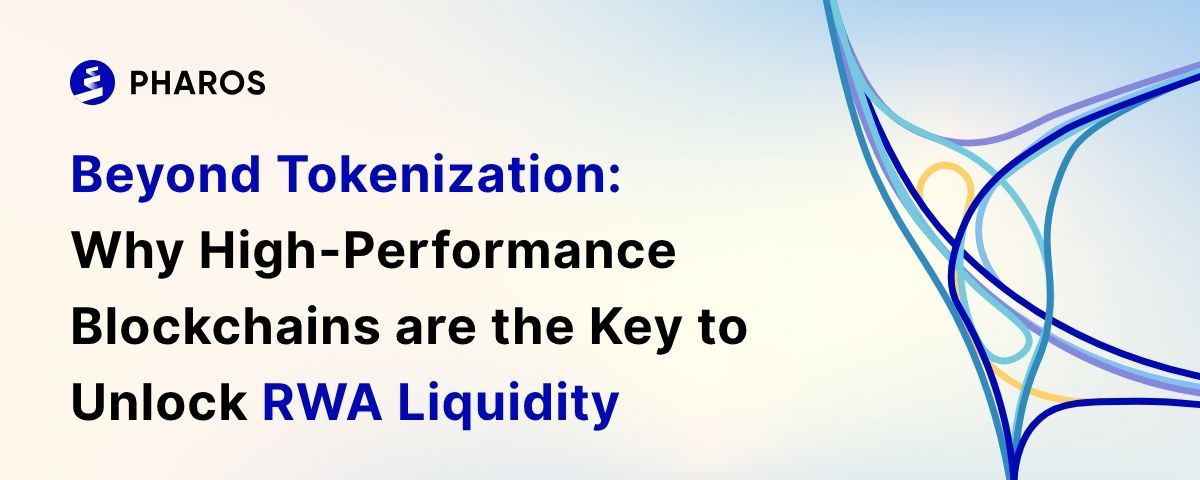Beyond Tokenization: Why High-Performance Blockchains are the Key to Unlock RWA Liquidity

The Real World Asset (RWA) narrative is taking center stage in crypto now, but amid the rush to tokenize everything, a first principle is being ignored: the true value of an asset begins with liquidity, not yield.
We've seen far too many projects fall victim to the "on-chain = success" fallacy, blissfully unaware of the fatal flaw: a lack of on-chain liquidity. Without a deep, robust market, even the highest quality tokenized asset becomes a mere ‘ghost asset’ - visible on-chain, but untradeable, illiquid, and economically irrelevant. The true power of RWAs to disrupt traditional finance lies not in simply putting assets on a blockchain, but in creating vibrant, on-chain liquidity for those assets.
The Fork in On-Chain Liquidity: AMM vs. CLOB
The creation of on-chain liquidity is currently evolving along two distinct paths: AMMs and CLOBs.
The Automated Market Maker (AMM) route has matured into a four-layer structure: Uniswap and its peers form the base liquidity pools, 1inch and similar aggregators optimize trading paths, intent-based platforms abstract away trading complexity (with MEV protection), and chain abstraction protocols enable seamless cross-chain liquidity flow.
On the other side, in the order book domain, Central Limit Order Book (CLOB) models are undergoing a radical transformation, moving from "off-chain matching, on-chain settlement" to fully on-chain solutions. Projects like Econia on Aptos and DeepBook on Sui have proven that high-performance blockchains make native, on-chain CLOBs a reality.
The real inflection point? Hybrid models, powered by redundant computing power, are emerging as the ultimate form of liquidity evolution. From MegaETH's GTE to Drift Protocol's JIT liquidity, the market is voting with its feet, proving that when speed and precision are no longer mutually exclusive, a true financial revolution can begin.
Closing the Gap with Sub-Second Determinism
For too long, the blockchain world has been fractured by a chasm that ripped apart liquidity: CLOBs offered precise pricing but forced users to endure agonizing, multi-second delays. AMMs provided instant execution but at the cost of crippling slippage.
Pharos's technological breakthrough lies in bridging this divide with sub-second determinism. Our AsyncBFT consensus engine slashes CLOB matching latency to a mere 100-200 milliseconds, while maintaining AMM execution speeds within 50 milliseconds, shrinking the latency gap to less than 4x. This leap forward, coupled with a 50,000 TPS parallel architecture, enables simultaneous price discovery across multiple CLOB engines and real-time depth provisioning for AMM liquidity pools, all orchestrated by an AI-driven dynamic routing algorithm for intelligent order allocation.
This architecture unlocks a new paradigm of liquidity: large orders tap into CLOBs for optimal pricing, while smaller trades are instantly executed via AMMs, obliterating the traditional trade-off between speed and precision. This "CLOB+AMM" hybrid model not only supports real-time collaboration across multiple liquidity pools but also enables cross-pool price synchronization through zero-latency oracles, laying the foundation for a complete on-chain financial market infrastructure.
Scaling from Bonsai to Ecosystem
Think of today’s tokenized RWAs as bonsai trees, carefully shaped but root-bound. Beautiful, but confined. Without deep liquidity soil, they can’t grow into full economic systems.
The Pharos approach directly addresses this core issue: unleashing the multiplier effect of liquidity creation through performance breakthroughs.
You may think about what's the ultimate, non-negotiable requirement for institutional-grade RWAs? Assets like bonds, foreign exchange, and commodities demand millisecond-level determinism. Pharos's sub-second finality puts on-chain settlement efficiency on par with traditional clearing systems for the first time. When assets like bonds and FX can achieve T+0 real-time delivery and millisecond-level risk management, the technological barriers to institutional capital finally crumble.
The future of RWAs isn't just about putting real-world assets on-chain. It's about rebuilding their liquidity DNA from the ground up.


